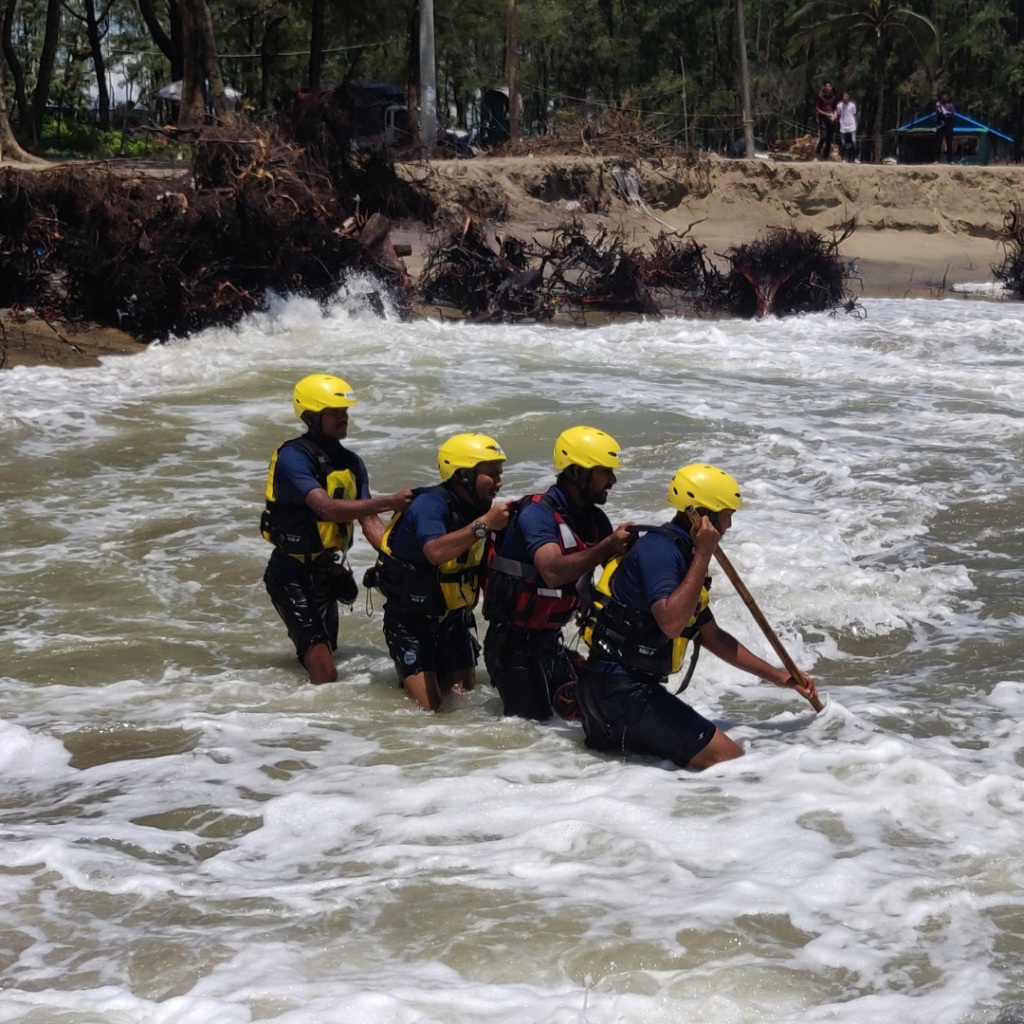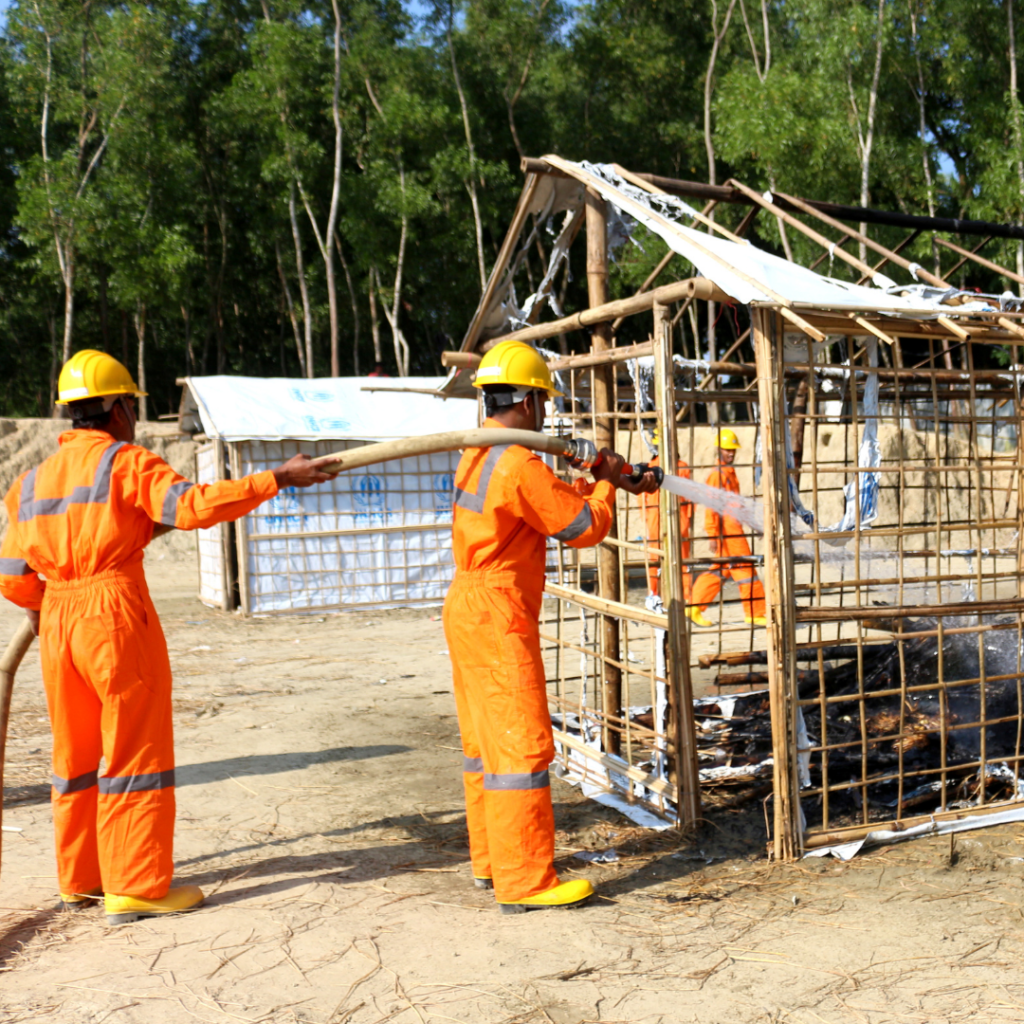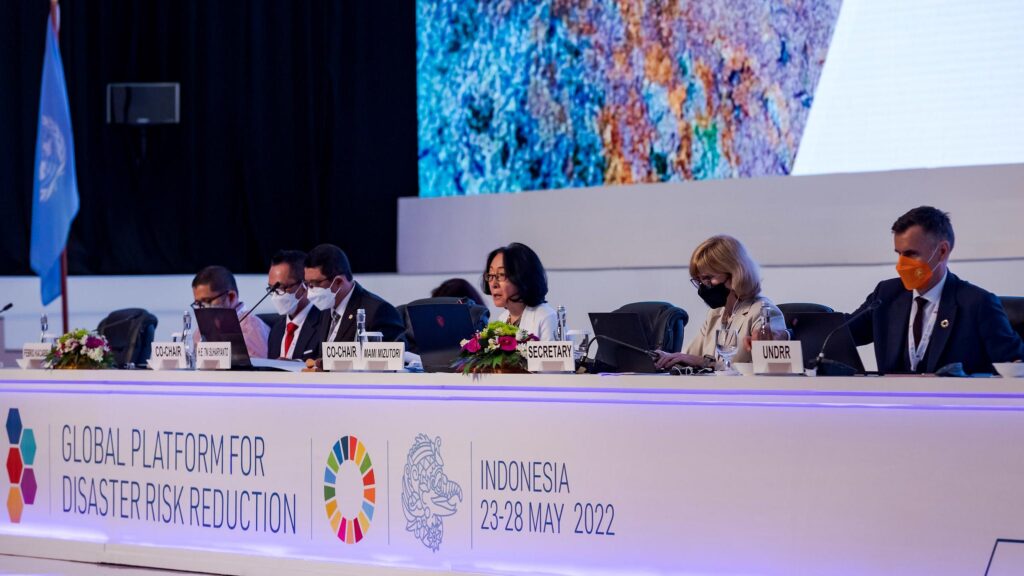“We know what happens when we don’t prepare better,
we don’t prevent better, and when disaster strikes…”
Explaining Disaster Risk Reduction (DRR) and the Global Platform for Disaster Risk Reduction 2022
Disaster Risk Reduction (DRR) is a systematic approach to identifying, assessing, and reducing the risk of disasters. As explained by United Nations Office for Disaster Risk Reduction (UNDRR), “DRR is aimed at preventing new and reducing existing disaster risk and managing residual risk, all of which contribute to strengthening resilience and therefore to the achievement of sustainable development.” The UN Agency organises quarterly sessions to assess the progress made on the implementation of the Sendai Framework for Disaster Risk Reduction in preventing and reducing disaster risk, and to foster multilateral collaboration between stakeholders on DRR. This year, from the 23rd to the 28th of May, the seventh session of the Global Platform for Disaster Risk Reduction took place in Bali, Indonesia. This comes at a time when have seen increasingly volatile climate emergencies take place globally, and collaboration across sectors is urgently needed.
The Global Platform is an avenue for risk reduction experts, governments, the UN system and its agencies, and all the stakeholders to share knowledge and discuss the latest developments and trends in reducing disaster risk, and this year it took place at a very critical time, when the humanitarian impacts of crises continue to soar and aid budgets fall short. According to UNDRR, the number of disasters taking place each year is dramatically increasing, from around 400 disasters in 2015, to 561 expected in 2030. Most worrying, is the fact that these trends do not consider future climate impacts which are accelerating the pace and severity of hazard events.
The Global Platform came at a time when the world was recovering from the COVID-19 pandemic, while facing the growing impacts of the climate emergency. This has been compounded by conflicts, including the war in Ukraine, which has disrupted global supply chains, led to inflation, and threatened food security, further deepening vulnerabilities of people living in the most disaster-prone parts of the world.
The theme of the Global Platform, “From Risk to Resilience: Towards Sustainable Development for All in a COVID-19 Transformed World”, offered lessons from the pandemic and pathways to address the climate emergency. The Global Platform underscored urgent actions necessary to accelerate efforts to bring the world on track to achieving the goals of the 2030 Agenda for Sustainable Development and the Sendai Framework for Disaster Risk Reduction.
The Global Platform, encouraged the international community to enhance cooperation in disaster risk management through collaboration towards sustainable resilience based on the principles of strengthened risk reduction culture and education; investment in science, technology and innovation; climate and disaster-resilient infrastructure; and implementation of global commitments. This global event provided a unique and timely opportunity to showcase the importance and value of inclusive and networked multilateralism, international solidarity and cooperation.
It’s also important to remember that people are affected differently by disasters. This calls for a participatory and human rights-based approach to include all under a principle of “nothing about us without us” in disaster risk reduction planning and implementation. Investments in youth and local knowledge systems should therefore be enhanced to stimulate innovation and creative solutions. There should be a recommitment to community engagement and to disaster risk reduction that is community-driven and child-centric and supports existing local structures and resilience building.
Main topics
“Accelerating Financing for Risk Prevention”
- The focus was on ways to increase financial flows dedicated to pre-disaster risk assessment and prevention.
- It was stressed that disproportionate resources are devoted to relief, rehabilitation, and emergency response, rather than to prevention, mitigation, and preparedness.
- The dialogue participants underscored the importance of innovative financial mechanisms for disaster risk reduction (DRR) to increase investment in key adaptation systems.
“Rethinking sustainable development; investing with strategic foresight to build resilience”
- The third plenary focused on effective multilateral risk governance and risk management.
- Participants highlighted the importance of adaptive governance, institutional coherence, and the need to enhance the effectiveness, accountability, and inclusiveness of the multilateral system.
- They exchanged opinions on how to enable the structural transformation needed to build resilience to disasters and ensure that no one is left behind.
“The Road to COP 27: Scaling up Joint Action to Reduce Climate-Related Disasters”
- Ways to scale up joint action to reduce climate-related disasters were discussed.
- Participants suggested investigating the trade-offs and compromises needed to ensure sufficient resilience and drew attention to the need for local governments to understand how to manage risk and resilience.
- Other factors discussed included: contributing to effective adaptation, learning how to address extreme climate phenomena, and engaging local youth and local communities as a guarantee for resilience.
Speeches and statements
- Megawati Sukarnoputri, Former President of Indonesia, highlighted work to strengthen Indonesia’s disaster management systems and urged avoiding potential food vulnerability through concerted multilateral action.
- Elham Youssefian, Inclusive Humanitarian Action and DRR Advisor, International Disability Alliance, presented stakeholders’ priorities, underscoring the need for a whole-of-society approach and the use and development of traditional and local knowledge, including Indigenous knowledge.
- Suharyanto, Minister of National Disaster Management Authority, Indonesia, summarized the outcomes of GP2022, focusing on the need for integrated DRR, development and finance policies; systemic changes; scaled up climate action; and a participatory and human-rights based approach.
- Manuel Bessler, Deputy-Director General, Agency for Development and Cooperation, Switzerland, thanked Indonesia for a successful, inclusive, and “buzzing” conference, and announced that the eighth Global Platform on DRR will be held in Geneva in 2025.
- Mami Mizutori, Special Representative of the Secretary General for DRR, shared her reflections on GP2022, stressing that “we can never underestimate the role that human decisions play.”
MOAS and Disaster Risk Reduction
Systemic risks cannot be eliminated entirely, but they can be reduced and addressed more effectively: this requires building on existing risk reduction know-how and on training the local community in DRR programs.
 MOAS’ experts have supported local partners in providing unique and innovative DRR Flood and Water Safety training in refugee camps, as well as in training and providing equipment to both volunteer responders from the refugee communities and volunteers from the local host community. This training creates resilience against water-related risks but also supports self-development, not only by providing volunteers will skills and equipment but also by improving leadership and teamwork. These programs also provide livelihoods to local tailors who make our safety equipment and receive up-skilling as part of the project.
MOAS’ experts have supported local partners in providing unique and innovative DRR Flood and Water Safety training in refugee camps, as well as in training and providing equipment to both volunteer responders from the refugee communities and volunteers from the local host community. This training creates resilience against water-related risks but also supports self-development, not only by providing volunteers will skills and equipment but also by improving leadership and teamwork. These programs also provide livelihoods to local tailors who make our safety equipment and receive up-skilling as part of the project.
In addition, noticing a stark increase in the frequency and severity of outbreaks of fire in crowded refugee camps, our team started supporting the development of one-of-a-kind DRR project for Fire Safety and Response. The project focuses on 3 elements: risk mapping, training in first response and the prototyping and manufacture of firefighting equipment. The risk mapping model allows our technical experts to advise camp management and other stakeholders on areas of particular risk and develop response strategies according to each context, while the training also provides first response skills and strategy implementation techniques to community-based volunteers. Finally, the team has prototyped several camp-context specific pieces of equipment, including fire-fighting tuk-tuks and backpacks, and are producing and procuring/distributing across several projects. With support from USAID, GIZ and WFP our team has helped producing 40 tuk-tuk firefighting units and procuring & distributing 200 fire safety backpacks. It also helped training on their use. 
Final considerations
While hoping that the recommended actions discussed at the Global Platform will be carefully and effectively implemented, MOAS will continue to support our partners and refugee camp management in mapping risks, providing training and distributing equipment to local and host community members – to combat the possible effects of fire and water-related events.

